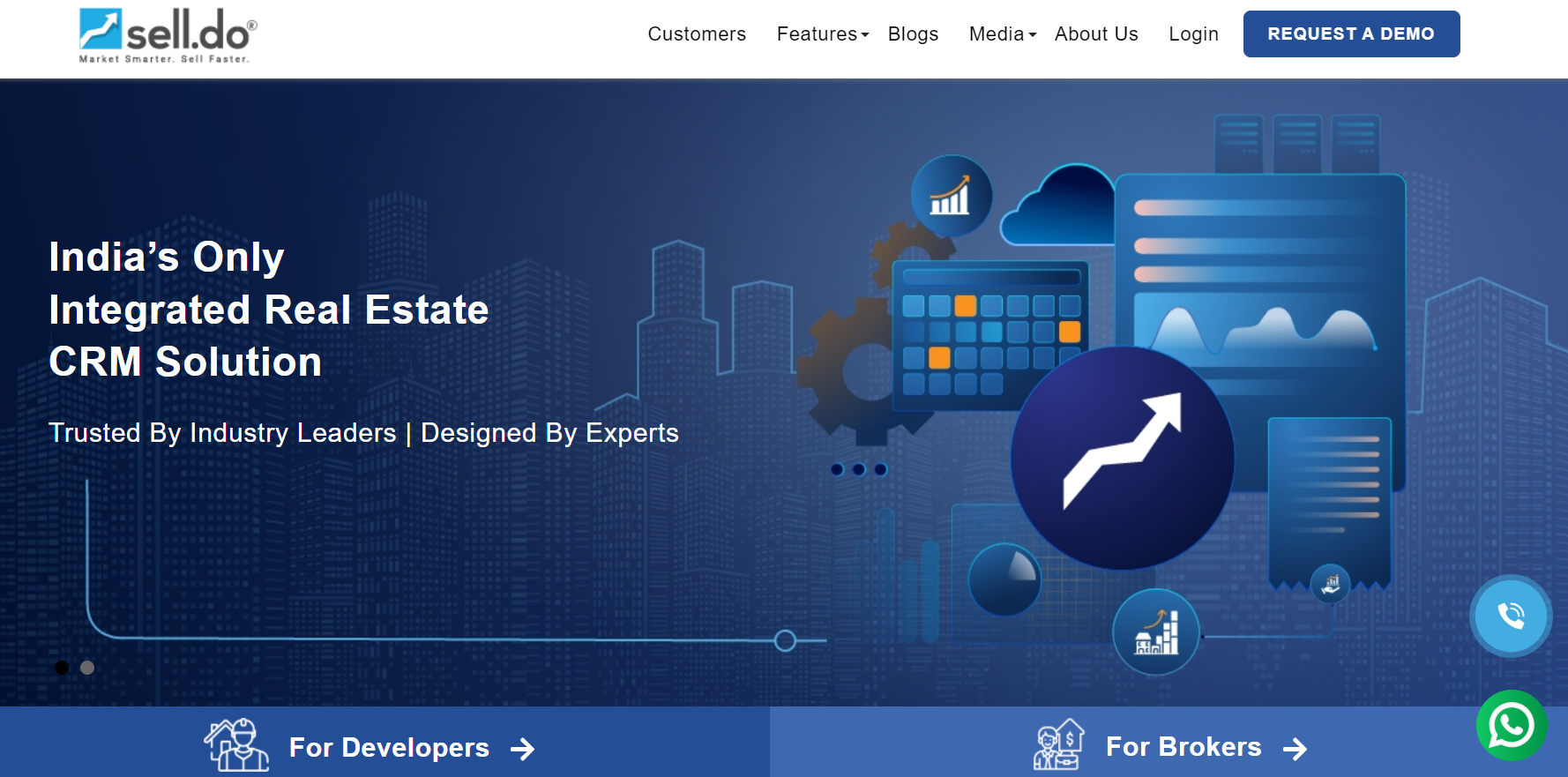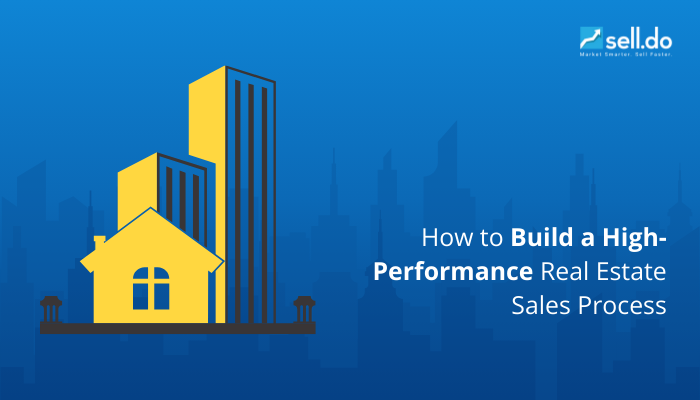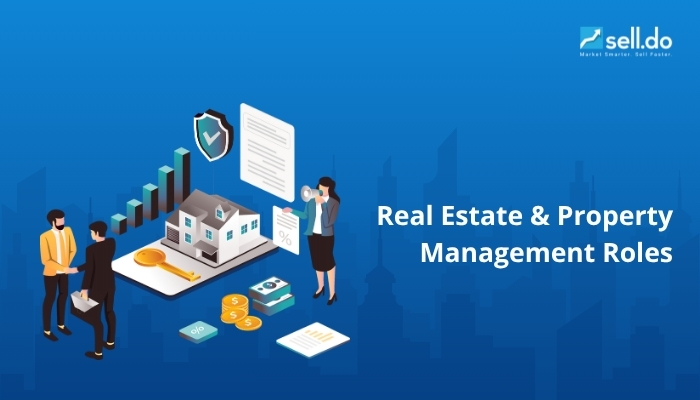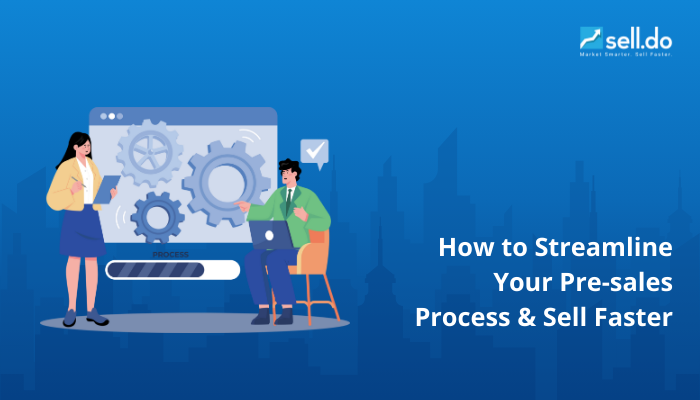You have spent months planning the project, finalizing RERA approvals, and setting up marketing campaigns. Now, the inquiries are pouring in, but your sales aren’t where they should be. Is this a problem you’re facing?
For many real estate developers in India, the gap isn’t in demand, it’s in the sales process. Site visits get missed, follow-ups fall through, and channel partners work without coordination, causing the leads to grow cold.
A high-performance sales process isn’t just about hiring more salespeople. It’s about building a clear, repeatable system that helps your team convert faster, keeps your channel partners aligned, and gives you full visibility—from lead to booking.
In this article, you will learn how to structure your real estate sales process for results. No fluff—just practical steps that help you sell more, stop losing leads, and grow your team with ease.
Stages of a Real Estate Sales Process

For developers, selling a unit isn’t just about talking to buyers. It’s about making sure the entire process is organized—so there are no missed follow-ups, pricing delays, or unit mix-ups. The better your process, the faster you close deals. Here’s what a strong sales journey looks like, step by step.
Lead Capture and Qualification
The process starts with capturing incoming leads through ads, property portals, social media, events, or channel partners. But not every lead is worth pursuing. The sales team qualifies prospects based on interest level, budget, timeline, and preferred unit type, filtering out casual browsers from serious buyers.
First Contact and Requirement Gathering
Once a lead is qualified, your sales team connects to understand the buyer’s needs. This includes gathering information like preferred configurations, budget, financing plans, and timelines. A good first interaction sets the tone for the entire sales experience.
Product Pitch and Site Visit Coordination
Based on the buyer’s requirements, sales reps present suitable units—either over the phone, in person, or digitally. Site visits are often arranged at this point. This stage is crucial because it brings the project to life for the buyer and builds real intent.
Negotiation and Documentation
Buyers begin evaluating pricing, discounts, payment plans, and terms. Sales teams negotiate within approved limits, share updated cost sheets, and align with internal stakeholders for price approvals. A delay in this stage often leads to cold prospects, so speed matters.
Booking and Payment Collection
Once the buyer is convinced, the focus shifts to collecting the token or EOI amount. Developers issue a booking form and initiate basic paperwork. Payment tracking becomes critical here to avoid drop-offs or miscommunication between teams.
Handover to Post-Sales or CRM Team
After booking, the lead is handed over to the post-sales or CRM team for agreement signing, document collection, and further payment follow-ups. A clean transition here keeps the buyer experience smooth and professional.
This is the typical flow that most developer sales teams follow. However, while the structure is standard, the real difference lies in how well each stage is managed, tracked, and optimized. And that’s where many teams run into friction—from slow approvals to missed follow-ups.
Here are a few Real Estate Marketing Ideas and Trends for 2025 that can help you get more leads for your business.
Next, we’ll look at the specific challenges that block your sales performance.
Sales Challenges Real Estate Teams Face
Even with a solid pipeline, sales fall through when processes break down. Indian developers often face recurring issues that stall momentum, frustrate buyers, and slow down closures. These aren’t isolated problems—they show up across teams and projects. Here's what’s really getting in the way:
Manual cost sheet sharing and back-and-forth on negotiations
Cost sheets are still being created manually in Excel at many sites, which means every time there's a price change or discount, the sales rep has to rework the file, get approvals, and resend it. Not only does this eat up time, but it also creates room for errors. In fast-moving sales conversations, this delay often leads to cold leads or lost interest.
No real-time unit availability or inventory data
Buyers today expect quick answers—especially when they ask about unit availability or current pricing. However, many sales teams rely on outdated inventory spreadsheets that are updated once a day or, worse, maintained separately across teams. This leads to double bookings, missed opportunities, and confusion during peak launch phases.
Delays in approvals kill buyer interest
Sales reps often wait hours—or even days—for internal approvals on pricing exceptions or discounts. When such a delay happens, the buyer moves on. In a market where options are everywhere, being slow to respond is as good as saying no.
Missing tokens or failed payments derail momentum
Even after the buyer is convinced, payment isn’t always smooth. Tokens or EOI payments may not be tracked properly, or the process may not be digitized. This leads to delays in confirming bookings and disputes over who paid and when.
Lack of field tracking and sales visibility
Sales managers have little visibility into what’s happening on the ground. Are site visits actually happening? Are leads being followed up properly? Without GPS-based tracking or check-in/check-out systems, it’s hard to measure performance or hold reps accountable.
Sales and site teams don’t work in sync
In many developer setups, the sales team is operating from one location while the site or pre-sales team is elsewhere. Without a connected system, information doesn’t flow smoothly, leading to miscommunication, duplicate efforts, and a poor buyer experience.
These challenges are more than just operational headaches—they directly affect your ability to close deals, scale your team, and deliver a consistent experience across projects. But with effective strategies in place, you can easily tackle these challenges.
To improve your sales funnel, we suggest you read our blog: Steps and Techniques in the Real Estate Sales Process
Next, we’ll look at what an ideal real estate sales system should include—and how it can fix these bottlenecks for good.
What an Ideal Real Estate Sales System Should Have

For real estate developers in India, especially those juggling multiple projects and high-volume site visits, a strong sales system is more than just a CRM—it’s the engine that drives faster closures and fewer leakages. Here’s what your ideal sales setup should include:
Smart Negotiation Tools
Buyers expect clarity and speed when it comes to pricing. Your team needs tools that reduce back-and-forth and maintain control.
A solid system should let your sales reps generate branded, project-specific cost sheets in seconds—no Excel juggling or template errors. Approvals should be built in: once a discount threshold is crossed, the system routes it to a manager, cutting delays and maintaining pricing discipline. Auto-generated quotations with your company’s branding and T&Cs give you consistency across every buyer interaction.
Real-Time Inventory & Launch Management
Without real-time inventory, your team risks over-promising or locking units that are already gone. A high-functioning system gives your team live visibility into which units are available, booked, or blocked across projects and towers.
It should also support inventory locking at the time of quote sharing or token collection so that no two agents sell the same unit. During launches, coordination is key. The system should help you allocate inventory phase-wise, limit internal bookings, and avoid conflicts across teams.
Smooth Booking & Payment Workflow
Manual follow-ups for tokens, cheques, or online payments often delay the booking process—and that delay can cost you a buyer.
The right sales system offers instant EOI/token capture linked to buyer records. With online payment integration, customers can pay securely from wherever they are, reducing drop-offs. Smart reminders, auto-alerts for pending payments, and a clear trail of all transactions ensure bookings don’t fall through the cracks.
Productivity Tools for Field Sales
Your field sales agents are your frontline force—but without structure, tracking their efforts gets tricky. A robust system should support GPS-based check-ins, so site visits and client meetings are logged automatically.
Hierarchy-based visibility helps senior sales heads track individual and team performance across projects. OTP-based site visit confirmation adds a layer of authenticity to field reports, ensuring site walk-ins are recorded accurately—no guesswork, no fudged numbers.
Sales Acceleration Tools
Sales performance often dips when there’s no feedback loop or motivation built into the process. Smart systems should come with built-in performance dashboards—customized by project, location, or sales agent.
Leaderboards, revenue boosters, and incentive trackers can help keep your team engaged. Want your team to push high-value units or close older inventory? Use gamified targets with real-time tracking. These small nudges can unlock big momentum—especially during launch phases or seasonal campaigns.
Recommended: Top Real Estate Social Network Platforms and Their Strategies
With the right foundation in place, let’s look at how Sell.Do brings these capabilities together to simplify and supercharge your sales operations.
Efficient Sales Management for Real Estate Developers with Sell.Do

Sell.Do isn’t your average CRM—it’s a complete real estate sales engine, purpose-built for developers and project-heavy teams. Unlike generic CRMs that need constant customizations, Sell.Do comes preloaded with everything you need to manage real estate sales at scale: dynamic pricing tools, real-time inventory coordination, and powerful automation that keeps your sales cycle moving—even during launch peaks. From pre-sales to post-booking, it brings your entire sales journey under one digital roof.
What makes Sell.Do stand out is its dual focus: one, a Channel Partner Hub that makes onboarding, performance tracking, and brokerage payouts seamless and transparent; and two, a Customer Interface that gives buyers an easy way to view inventory, complete bookings, make payments, and upload documents. It’s not just software—it’s a business advantage that helps you sell faster, maintain trust, and reduce overhead.
Key Features of Sell.Do
Negotiation Tools
- Dynamic cost sheet and payment schedule management
- Role-based approval engine for discounts and pricing schemes
- Auto-generated quotations with branding and terms
Inventory + Launch Management
- Real-time inventory view across projects, phases, and towers
- Smart launch coordination to avoid double bookings or conflict
- Automated EOI and token management with full traceability
- 2D/3D project views and immersive VR walkthroughs
Payment Collection System
- Integrated payment gateway with multi-mode payment support
- Transparent payment dashboards for customers
- Auto-generated demand letters, receipts, and ledgers
Sales Team Management
- GPS-based location tracking and check-in/check-out
- OTP-based site visit confirmation to avoid misreporting
- Role-based hierarchy management with performance visibility
- Task reminders, follow-up automation, and escalation engine
Revenue Tracking
- Built-in gamification with offers, targets, and leaderboard visibility
- Revenue booster engine for tracking incentive programs and push sales
- Real-time dashboards to monitor conversion metrics and ROI
Channel Partner Management
- Centralized partner onboarding and performance monitoring
- Conflict-free inventory and transparent commission management
- Automated brokerage payout with audit trail
Customer Self-service Portal
- Buyer view for payment schedules, demands, receipts, and ledgers
- Document uploads, eKYC, and digital signatures
- Referral programs, helpdesk support, and construction updates
Integrated Communication Suite
- WhatsApp, SMS, email, and IVR—all in one platform
- Bulk campaigns and smart lists for precise targeting
- InstaConnect and auto-dialers for instant follow-ups
To understand how Sell.Do can make a difference, check our case studies here.
Conclusion
Real estate sales run on timing, coordination, and trust. When your sales process is clear, fast, and connected, your conversions improve—no extra effort needed. But too often, sales teams are slowed down by manual tasks, messy handovers, and outdated tools.
Sell.Do brings everything together. It's made specifically for Indian real estate developers, not just any sales team. You get better control over inventory, faster bookings, smoother negotiations, and total visibility across site visits and team performance. It simplifies the work so your team can focus on what really matters—closing deals.
Start building a smarter sales engine and book your free demo with Sell.Do today.






Leave a comment
Comments (0)
Be the first one to comment.